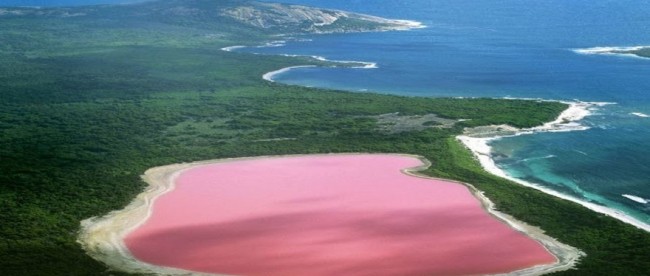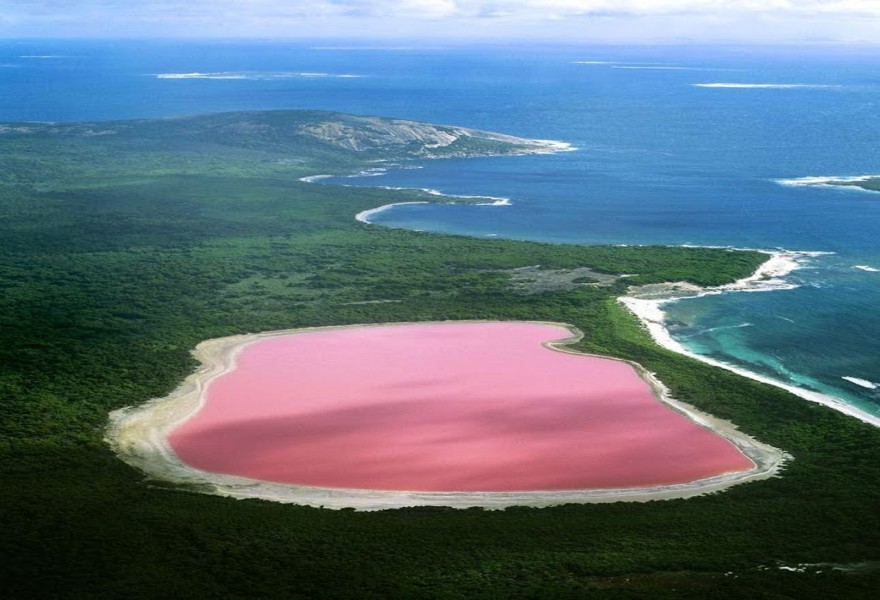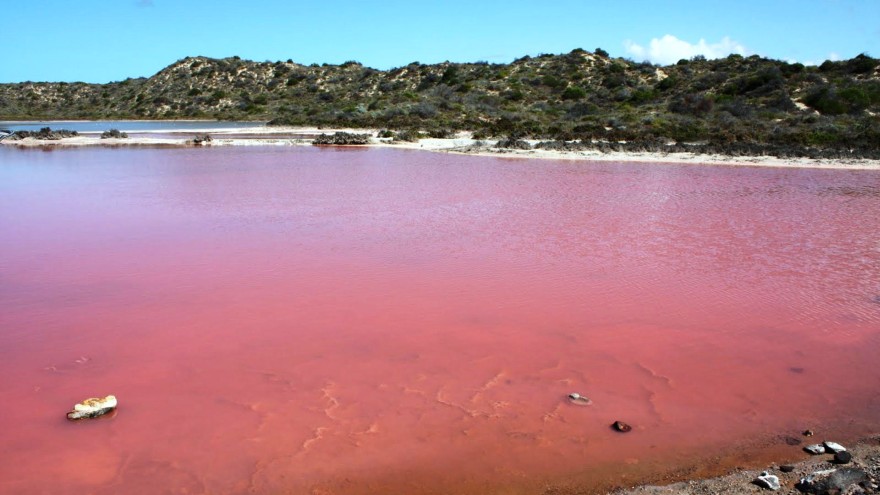Australia’s Pink-Like-Bubble Gum Lake


The picture above is of a real lake. The picture hasn’t been Photoshopped or otherwise materially adjusted. The lake isn’t filled with Pepto Bismol, bubble gum, or pink food dye. It’s just naturally pink.
The lake above is called Lake Hillier, situated on an island in the Recherche Archipelago, a collection of islands to the south of Western Australia. (Here’s a map.) The lake is about 2,000 feet (600 meters) long and 800 feet (250 meters) wide but, because it’s not on the mainland, it went undiscovered until 1802. That year, a British explorer summited a mountain and eyed what he called a “small lake of rose colour,” according to Jeopardy! champ Ken Jennings. So, as far as we know, it’s always been pink.
The pink color isn’t an optical illusion, either. If you go to the shores of Lake Hillier, you’ll see that the pink hue remains, although it’s muted a bit, as seen below. And if you take some of the water out of the lake and put it in a pail or jar (ideally a clear one), you’ll see that the water remains pink — even when it’s no longer in the lake.
So what causes this phenomenon? While there are a few plausible explanations as to why Lake Hillier is pink, the most common one centers on salt and algae. Lake Hillier has a very high concentration of salt — its salinity level is probably around 30%. (For comparison’s sake, the Dead Sea is at 34.2% salinity, making it nearly ten times as salty as the oceans.) Second, Lake Hillier is home to a type of algae known as Dunaliella salina. Unlike most algae which turns bodies of water into a murky green color, Dunaliella salina has a reddish pigment which helps it absorbs light. Because Dunaliella salina thrives in salty environments — and very few other life forms can — the result in Lake Hillier is a deep, thick pink.
And while you probably don’t want to drink the water, it’s probably safe for humans to swim in it, and people do regularly. (It’s hard to get to, though — you need to take a helicopter from the mainland to the island). But don’t expect to practice your breaststroke or crawl — you won’t find it very easy to navigate through the waters. The high salinity of the lake means that you’ll likely bob along, floating the whole way, like, as Ken Jennings notes, “a cork in a bottle of pink, pink wine.”
More images of the lake, including larger versions of the ones above, can be found here.
 Bonus Fact: The active ingredient in Pepto Bismol is bismuth subsalicylate, which, as the name suggests, involves bismuth, a metallic chemical element. If you (for some strange reason) decide to take a blowtorch to Pepto Bismol, everything but the metal burns away, leaving you with a hunk of metal ore. Want to see it in action? Instead of trying it at home — blow torches aren’t toys — check out this video.
Bonus Fact: The active ingredient in Pepto Bismol is bismuth subsalicylate, which, as the name suggests, involves bismuth, a metallic chemical element. If you (for some strange reason) decide to take a blowtorch to Pepto Bismol, everything but the metal burns away, leaving you with a hunk of metal ore. Want to see it in action? Instead of trying it at home — blow torches aren’t toys — check out this video.
From the Archives: Lightning Lake: It’s not pink. It’s electric, and often.
Take the Quiz: A list of pink and purple things — with some gaps for you to fill in.
Related: Take molten bismuth and cool it such that it take sa crystalized form, and you’ll end up with a rainbow-colored stair-step pattern as seen here.

